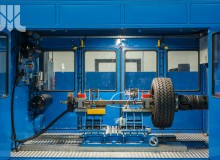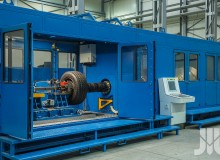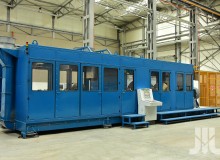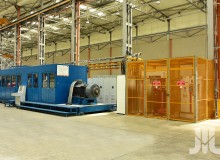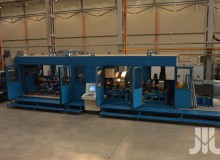Tests of axles in operating conditions
The tests of axles are performed in accordance with Regulation No. 13 of the United Nations
Economic Commission for Europe (UNECE ). The test stand makes it possible to test
the axles under conditions close to actual operating conditions. Braking efficiency is
determined on the basis of the tests.
Equipment and parameters:
• continuous measurement of rotational speed from 0 to 1200 rpm
• maximum test torque: 30 000 Nm
• measurement of temperature of braking systems from 0 °C to 700 °C, with accuracy up to 0.5 °C
• wind tunnel simulating flow of air around the wheel
• computerized recording of test results
• maximum length of axle with a wheel: up to 3000 mm
• continuous measurement of the force acting on expander shaft
• continuous measurement of braking torque
• continuous measurement of braking delay
• assessment of braking efficiency and uniformity
• continuous measurement of brake cylinder pusher stroke
Application:
• real-time recording of important parameters (e.g. brake actuation control pressure, brake cylinder arm
stroke, temperature, wheel speed, braking torque)
• cyclical braking
• repeatability of test conditions
• possible setting range of moment of inertia with electronic control is 155–3655 kgm2
• tests performed using drum brakes and disk brakes
Research and Development Center
- About the Center
- Accredited laboratories
- Test offer
- Material tests
- Non-destructive tests
- Power hydraulics tests
- Static and dynamic tests
- Axle tests
- Wheel tests
- Prototype testing
- Falling object protective structure (FOPS) tests
- Vehicle stability tests
- Electrical quantities tests
- Machine noise testing
- Environmental and climatic tests
- Chemical tests
- Approval tests
- CBR services
- Contact CBR


